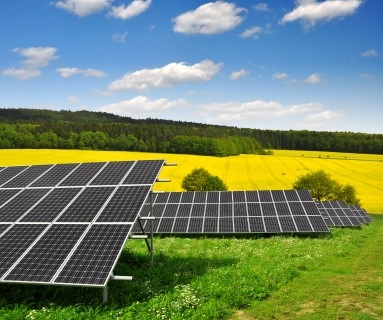
China axed tariffs and incentives to boost energy capacity
It's looking to add 80 gigawatts in four years to wind capacity alone.
China’s feed-in-tariff (FiT) mechanism is replaced with a bidding process for new wind and solar power projects that will cut tariffs and incentives for operators to increase capacity. The strongest impact will strike producers of solar panel equipment as solar capacity additions may decline sharply, Fitch rating said.
The new policy which was introduced in May may be severe for solar than wind power, Fitch Ratings noted. Because of its implementation, most wind farm projects which have not received approval will now be allocated through the new bidding process, with prices not allowed to be over the current FiTs.
Meanwhile, a halt has been placed for solar powered utility-scale farms for 2018 except for distributed projects and those that fall as “top runner” and “poverty alleviation programmes.
Also read: China and India renewable power to explode over the next decade
“We do not expect a significant credit impact on operators, in part because lower tariffs on new projects will be largely offset by falling costs, higher utilisation of existing capacity, and lower capital expenditure,” Fitch commented.
Fitch thinks that the new policies will speed up the push to equalise tariffs for renewable and coal-fired power that is important for sustainable long-term renewables growth.
China’s Renewable Energy Fund (REF) pays subsidies to operators to help cover the difference between renewable and coal-fired tariffs which will be narrowed by the new scheme. REF has seen widening deficits as renewable capacity grew and has delayed the payment of some subsidies.
“Renewable power generation increased by 35% in 2017, which we estimate inflated subsidies by US$7b (RMB45b),” the ratings agency said.
However, the policies will slow down appetite for investment in renewable energy. The sector has exceeded the government’s expectation and reduced problems for operators, Fitch noted.
The solar equipment manufacturers along the polysilicon to product module chain may experience a drop in demand and prices as solar capacity additions start to go down. Despite this, Fitch believes that downstream wind and solar power operations can cope with the negative impact of lower tariffs for future projects and pressure on cash flows from subsidy collection delays.
“The levelised cost of energy continues to drop, while falling investment is likely to increase utilisation of existing capacity - for which FiTs remain unchanged,” Fitch said.
According to the ratings agency, the implementation of the renewable energy quota which enforces minimum clean energy requirements for both companies and large consumers will relieve reduction problems whilst the lower capital expenditure will back up improvements in operators’ cash flow and leverage.
“That said, the bidding mechanism is likely to favour large, experienced industry players, with better cost structures, technology leadership and access to low-cost funding,” the agency explained.
Meanwhile, smaller operators may deal with difficulty in winning bids for new projects, leaving them with the choice to leave the market, be acquired, or to accelerate industry consolidation. Fitch believes that smaller operators and manufacturers may have to go through difficulties amidst tighter credit conditions.
The Chinese government is looking into adding 80 gigawatts (GW) in the country’s wind capacity from 2018 to 2022 which is a 27GW increase per year from 2017’s 20GW.
























 Advertise
Advertise






